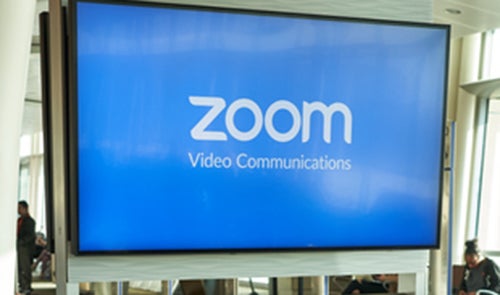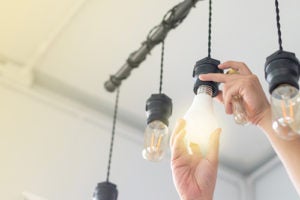Basic Video Shooting with a Smart Device
Avoid shooting video while holding your phone or mobile device vertically. Once imported into an editing program it will have black bars down the sides and cannot be fixed through cropping.
-
Hold camera steady. Tucking your elbows into your body and using a "defensive stance" will turn your body into a natural tripod
-
If you can, use a tripod or monopod for stabilization.
-
If you don't have a tripod, check out the video below to gather ideas of creating a DIY tripod.
-
Avoid zooming in and out with your camera. There are several reasons:
-
Your cell phone camera likely only has digital zoom. This means it isn't actually zooming, but is simply magnifying the pixels, which results in poor image quality later
-
Zooming in and out during a shot can make the viewer uncomfortable
-
-
Walking/moving shots
-
Avoid these as much as possible, as they create shaky, unusable footage
-
-
Back lighting and Background - As mentioned before, make sure your subject isn't directly in front of a bright light and that the background isn't overly busy or distracting
Five Ways to Look and Sound Better on Zoom

-
Always begin a new Zoom meeting ahead of time to make sure you’re happy with how you look and sound. Try not to make people wait too long for the meeting to start.
-
If you aren’t the host of the meeting, you can still create a separate Zoom session in advance for a test run of the audio settings and to go through the checklist of all the tips offered in this article.
.
-
Natural, diffused lighting is the most flattering light. If possible, set up facing a big window, or even sit outside if it’s not too noisy. If natural light isn’t an option, place a lamp with a white lightbulb behind your computer screen to achieve a similar effect. If natural light isn’t an option, place a lamp with a white lightbulb behind your computer screen to achieve a similar effect.
-
When possible, avoid harsh lighting coming from a single direction, especially from above, that will cast unflattering shadows on your face. Also try to avoid lighting from behind you, which will leave your face dark and silhouetted.
-
Try your best not to mix different colored lights. Being consistent in using either a warm or cool light works best.

-
Your face and upper chest should be centered on the screen. For the most flattering angle, place your computer or phone on an elevated surface so that the camera is at or slightly above your eye level. This might sound silly, but try it and you’ll see the difference it makes in your appearance.
-
Try to find a spot where your background isn’t too distracting. If your workspace isn’t ready for primetime or you’d like to keep your space private, the Zoom app on some smartphones and computers has the option to choose a virtual background by clicking on the up arrow next to the Start Video icon. Unfortunately, this function isn’t consistently effective on all devices, so it’s a good idea to test beforehand. You can use images or video on your computer or find something new from a royalty-free website like Pexels, Unsplash, Pixabayor Coverr. Keep the Peter Parker principle in mind and use this virtual power responsibly!
-
In the Settings menu under the Video section, you can also choose the option to Touch Up My Appearance. This function retouches the video display with a softer focus, smoothes out the skin tone on your face and presents a more polished appearance. It’s like getting a free makeover.

-
Learn where the camera is and try to look into it the same way you maintain eye contact in person. This will make the audience feel like you’re speaking right to them.
-
If you are presenting during the session and want to read from notes, create a makeshift teleprompter by positioning a Word or Google doc with your notes in a small window right below your camera.
-
Solid color shirts are best when you’re on camera; busy patterns can look blurry on video.

-
Phone and computer microphones pick up a lot of noise that you might not be thinking about. Pay attention to background sounds such as appliances, TVs, pets, traffic and other noises. Log in from a quiet area where you won’t be disturbed. Inform your roommates and family that you’re in a meeting so they don’t interrupt you.
-
If you aren’t getting good sound from your computer, use a headset or a microphone. The Logitech USB Headset H390 is a simple and inexpensive option. If you already have headphones but need a better sounding mic, the Samson Meteor USB microphone is a small portable choice with its own stand.
-
Be sure to mute your microphone when you’re not speaking and if you’re running a meeting, mute all the participants if ambient noise is causing a distraction.
Shooting Interviews
This LinkedIn Learning course is a must-see for anyone shooting documentaries. It includes invaluable information about how to light, stage. and film an interview.
Welcome from Video Foundations: Interviews by Anthony Q. Artis
Composition and Camera Motion
Although you will be capturing real events unfolding in real time, you can still be creative about how you compose your shots. See the links below for more information about the techniques of composition.
The most basic consideration for shooting video is how to frame your shot:
 Extreme Long Shot: Very wide shot, often for landscapes
Extreme Long Shot: Very wide shot, often for landscapes
 Long Shot: From head to toe
Long Shot: From head to toe
photo from flickr by Adam Lerner
Medium Long Shot: From the knees up
 Medium Shot: From the waist up
Medium Shot: From the waist up
 Medium Close Up: Includes the head and shoulders
Medium Close Up: Includes the head and shoulders
 Close Up: Frames the face
Close Up: Frames the face
photo from flickr by Ryan Li
 Extreme Close Up: Tight framing shows a detail in the scene
Extreme Close Up: Tight framing shows a detail in the scene
photo from flickr by Elaine
A-Roll/B-Roll
In documentary filmmaking, A-Roll is generally your interview footage, while B-roll is the supporting footage inserted between the interview clips. Some types of documentaries (poetic, observational) do not have this structure and consist entirely of A-Roll footage.

